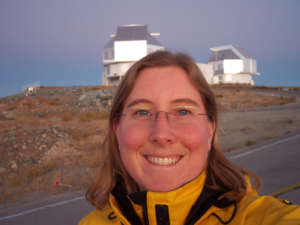
NASA’s new solar probe, space telescope to push the limits of science
NASA'S Goddard Space Flight Center scientists have to big projects in store that they hope will help us learn more about the sun and look further into space to...
The Parker Solar Probe is set for launch this Saturday (Aug. 11) on a mission to the Sun. But the spacecraft is not expected to crash and burn on the surface.
It will travel 96 percent of the way to the Sun, within four million miles. Flying faster than anything man has created, its speed will allow it to escape the Sun’s gravity and pass through its atmosphere, sending back data for the next decade.
This remarkable achievement makes for exciting times at NASA’s Goddard Space Flight Center in Greenbelt, Maryland, where scientists are also preparing the next generation of space telescopes.
The James Webb Space telescope is not due for launch until 2021, but when it does it will give researchers the chance to look at light that took 13 billion years to get here. That will give us the clearest picture yet of how the universe has evolved.
Mission to the Sun
The Parker Solar Probe will study the Sun’s corona and solar wind. Its namesake Eugene Parker is the retired University of Chicago physicist who proposed the existence of solar wind, and predicted the turbulence of solar energy and its impact on our planet.

The probe will start getting close to the Sun in November. Given the closeness of the fly-by, how can scientists prevent it succumbing to a fiery demise?
“The probe has fuel, so we can control the entry-point and the exit-point of the sun’s atmosphere,” Goddard planetary scientist Geronimo Villaneuva told Federal News Radio as part of its special Agency in Focus: NASA.
“The moment we lose the fuel we have for the spacecraft, it will die,” Villaneuva said on Federal Drive with Tom Temin. “But we’re going to be happy with the spacecraft for taking all that data for 10 years.”
One of the biggest challenges the probe’s scientists have faced is how keep the spacecraft from melting. While the Sun is millions of degrees, the surface of the spacecraft’s heat shield will only get heated to about 2,500 degrees Fahrenheit. The scientific explanation has to do with the thinness of the sun’s corona and the lack of super hot particles hitting the probe’s sun shield.

“We have developed this very complicated technology, which is a mixture of different things. We have cooling devices with water, but the main thing is the heat shield, which is about 4.5 inches thick,” said Villanueva. “On one side it will be 2,500 degrees, on the other side it will be super cold space.”
With instruments kept cool at an average of 75 degrees, they will gather data that will help researchers learn more about the way the sun impacts our lives.
“When the sun experiences a big storm (coronal mass ejection) all of the particles emitted reach our planet and may destroy our communication services and even the power grid,” said Villanueva. He said the more we learn about how the sun’s energy works, the more we’ll be able to predict solar ejections and take precautionary steps back here on Earth.
The Webb Space Telescope – seeing further than ever before

The James Webb Space Telescope holds the promise of extending the scientific work of the Hubble and other space telescopes, giving us a clearer picture of how the universe has evolved. Set for launch in March 2021, Webb will be used to study the first generation of galaxies formed after the Big Bang, and to see inside dust clouds where stars and planetary systems are forming.
To get a “sneak peek” of what’s in store, NASA astrophysicist Jane Rigby has had to resort to scientific workarounds. As the deputy project scientist assigned to the Webb project, Rigby is excited about what the technology of this next generation of space telescopes will offer.
“The purpose of Webb is to understand how galaxies formed after the Big Bang, how they evolved over cosmic time, how the stars in those galaxies formed themselves and the planets, and something about what planets are made of, what their atmospheres are like, and if there are any that might have the right conditions for life,” Rigby said.
Originally scheduled for launch this fall, the James Webb Space Telescope was delayed by human error, over-optimism, and the complexity of the project. The cost of the mission has soared to nearly $10 billion. But like her fellow scientists, Rigby sees Webb as an important advancement in astronomy, giving us a better understanding of the universe.
The size of a 737 jet and nearly the same weight, Webb sits atop a large, diamond shaped sunscreen that shields it from the light and heat of the Sun and Earth.

“The Webb telescope has this huge six-and-a-half-meter-across primary mirror, gold and hexagonal. It’s beautiful,” Rigby said.
Like Hubble before it, the Webb Space Telescope will orbit the Sun, not the Earth. It will inhabit a zone that is 1 million miles away from Earth. That allows the telescope to stay at the same distance from Earth as they orbit together around the Sun in a position that allows the satellite’s large sun shield to protect Webb from the light from the Sun, Earth, and Moon.
“While the Hubble Space Telescope sees light that is blue ultraviolet, Webb is optimized to see way out into the infrared,” Rigby said.
Infrared capability is needed to reach back to the beginning of time. Having travelled 13 billion years for us to see it now, blue light from an infant galaxy stretches into invisible infrared wavelengths. Rigby said another advantage of using infrared is that it gets around the problem of the universe being “a really dusty place.”
“Blue light doesn’t get through the dust, but red does, so that lets us peer into places that are dusty and obscured to places where stars are forming, places where black holes are feeding,” she said. “So we can see into the parts of the universe that are hard to see.”
Scientists will use the Webb telescope to learn a variety of things. And, Rigby said there is going to be plenty of competition to be one of the few who will gain access.
“Scientists from the United States, Europe, Canada, and the rest of the world will apply for time with Webb, trying to produce the best, the winning proposals,” she said. “It’s very cutthroat.”
When Webb is operational, it will use its infrared capabilities to look further back in time than we have ever looked before. But among the first scientists to use the telescope will be those who helped develop it, and they are interested in something closer to home.
NASA last year announced plans for Webb to aim its instruments at the “ocean worlds” of Jupiter’s moon Europa and Saturn’s moon Enceladus, observations that could shed new light on the origins of life,
Just recently, researchers discovered on Mars what appears to be a large underground reservoir of liquid water under the southern polar icecap. Scientist believe water is necessary to sustain life as we know it.
“We’ve been searching for bodies of liquid water on Mars for a long time, so this is definitely exciting,” said Villanueva, who was not a part of that discovery but will head the Webb team that studies Europa and Enceladus.
Copyright © 2025 Federal News Network. All rights reserved. This website is not intended for users located within the European Economic Area.




